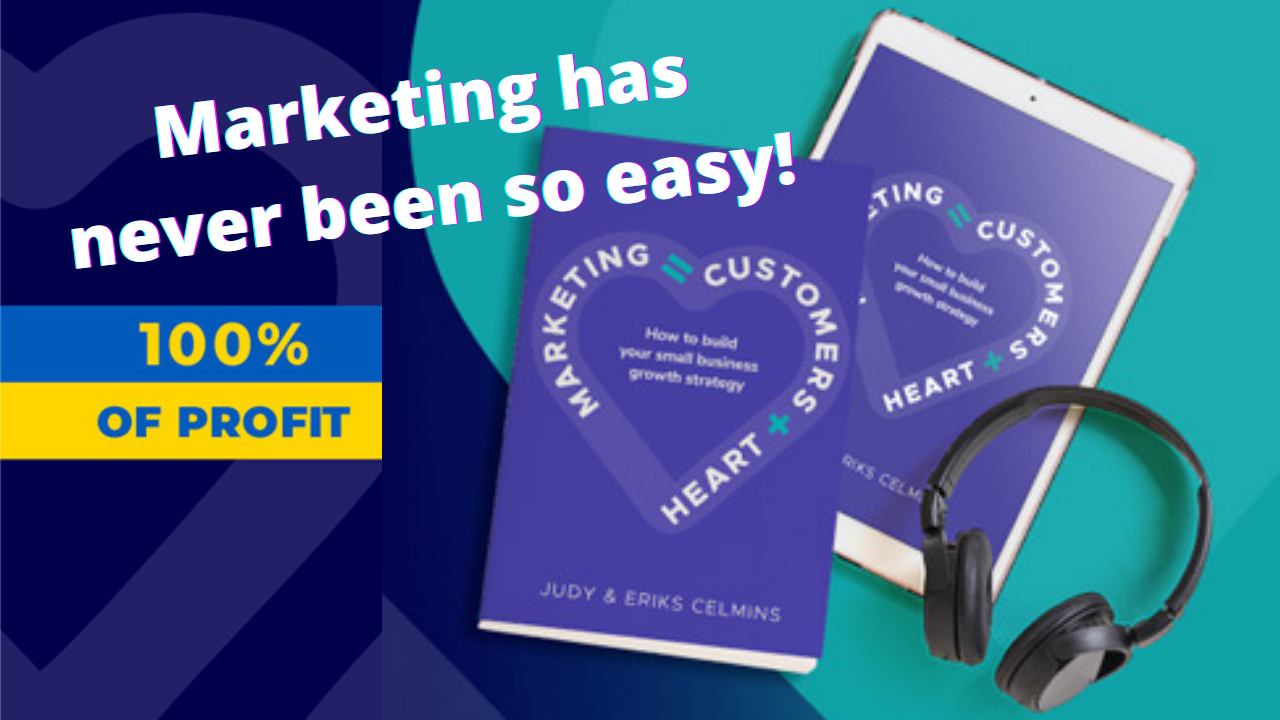Does this sound familiar in your small business?
You’ve gathered your team to fix a problem. You outline the situation and ask for answers.
But there’s a fundamental issue - you’re coming at it from a negative place. You have a problem, and that automatically means stress. Now I know that’s not your intention. But the more you look at it, you feel overwhelmed, not knowing where to jump.
You’re spinning around trying to find a creative solution. But the way you’re approaching the issue is the obstacle in itself.
Here’s a practical example: you have an issue with slow delivery. Customers are complaining, it’s draining for the team, they’re feeling it from every direction.
Then you call a meeting, by which time everyone is stressed.
So, let’s turn it around.
Start at the end point of ‘where you want to be’, not ‘where you are’.
Begin the meeting by stating what you want the outcome to be. So, using our example above, we want fast delivery to all our customers. How can we go about that? Where are the opportunities to be innovative?
Now all of a sudden, you’ve flipped your team’s mindset. You’ve opened up to positive outcomes, that go beyond the short-term Band-Aid.
It’s so simple but most of us don’t do it. We’ve been trained to fix problems, not create exciting new solutions.
This simple switch in thinking, is the basis for unearthing opportunities. Freeing your mind to think outside the box in seizing those opportunities.
Unshackling the mind is your most powerful force for positive change. You break out of the loop of just reacting to problems. Which keeps you stuck in the present, but not expanding your imagination to future possibilities.
Your reason for being, is ultimately driven by what customers want and need from you.
Looking at an opportunity through the lens of how that fits into your customers’ world, is the source of successful innovation.
It’s natural in our current uncertain environment to only see negatives - you still have to pay the bills.
But the best innovations have come from the worst of times. There’s something in our psyche that pushes us to invent solutions, and Kiwis have proven this time and time again. The #8 Wire mentality is ingrained in all of us.
Throughout human history we’ve proven that we can change our world no matter what the wider environmental conditions throw at us.
And our current situation is something we in small business have to get used to. There’s always a challenge coming round the corner.
General Electric survived through several economic downturns, Fed-X started life during an oil shock, Disney during the Great Depression.
The point is, they identified opportunities when resources were scarce and consumer spending was plummeting. Not what most of us would normally assume was a time of great potential for growth.
All of them, however, paved their customers’ way for better times.
Which brings me to my second point.
You must have a customer focus, beyond just the transaction.
The great inventors imagined a future based on what customers are trying to achieve now. People don’t have the foggiest of what you’re capable of developing down the track. They only know how they are using your product to fulfill a current need. It’s your job to create the future.
It’s why sending a short survey to customers after your transaction, is never going to define your future. It’s only giving you a look in the rear-view mirror.
There’s a reason why the successful innovations we take for granted every day, are obvious after they happen. It’s because the creators understood how and why customers were using a particular product/service.
Your job is to see the obvious before it is.
It all takes imagination, but you don’t have to be a creative genius. You already have all the tools you need, but you do need to put them into an order.
So, here’s my recipe in just 3 steps.
Step 1
Free the mind, get everyone on your team in the same stress-free space.
You can’t create ideas from a cluttered, pressured mind, the future just looks like more stress.
Step 2
Know your customers. I’m not talking about what demographic group they belong to, or when they last purchased. It’s about understanding the deeper ‘why’ behind their purchase decision. It’s about getting to know them as real people with real, everyday needs.
When you combine steps one and two, you’re now in a position to create ideas from the perspective of what makes your customer’s life better.
All going well, you’ve gathered all this input from both an energised, positive focused team, and customers that want you to succeed. And believe me, they really do, because you enhance their life in some way.
Step 3
Prioritise the ideas. Which one will work? Which one is worth doing now?
I don’t have time to address this final step here - it’s why we’ve developed a methodical process for doing exactly that.
But here’s the takeaway. Approach creating ideas to seize opportunities, from this ‘needs’ perspective. The needs of your customers, and team, ensuring that your ideas are more purposeful, grounded in reality. These are the future winners.
Hungry for more? Marketing = Customers + Heart is your road map to building your growth strategy.


